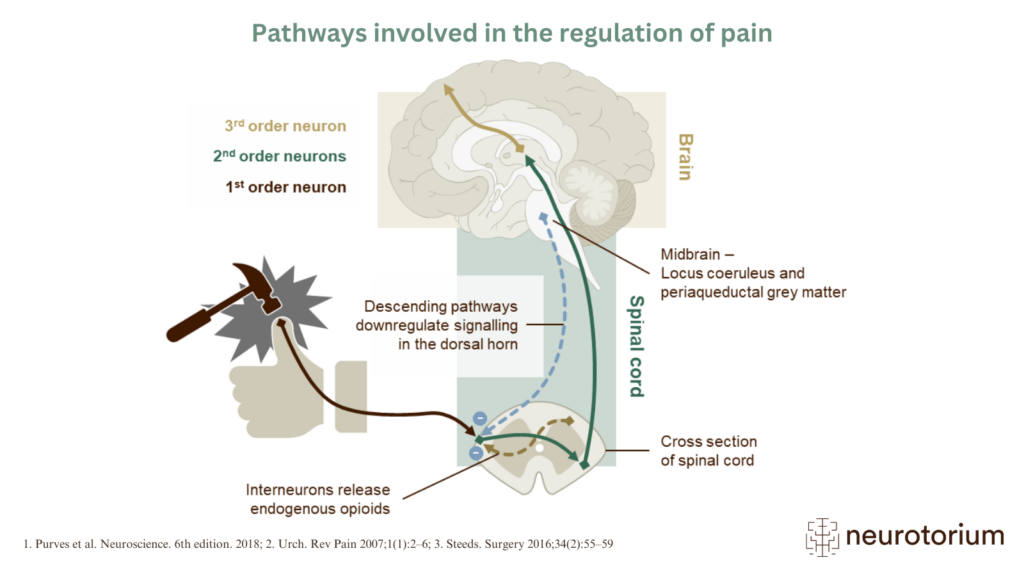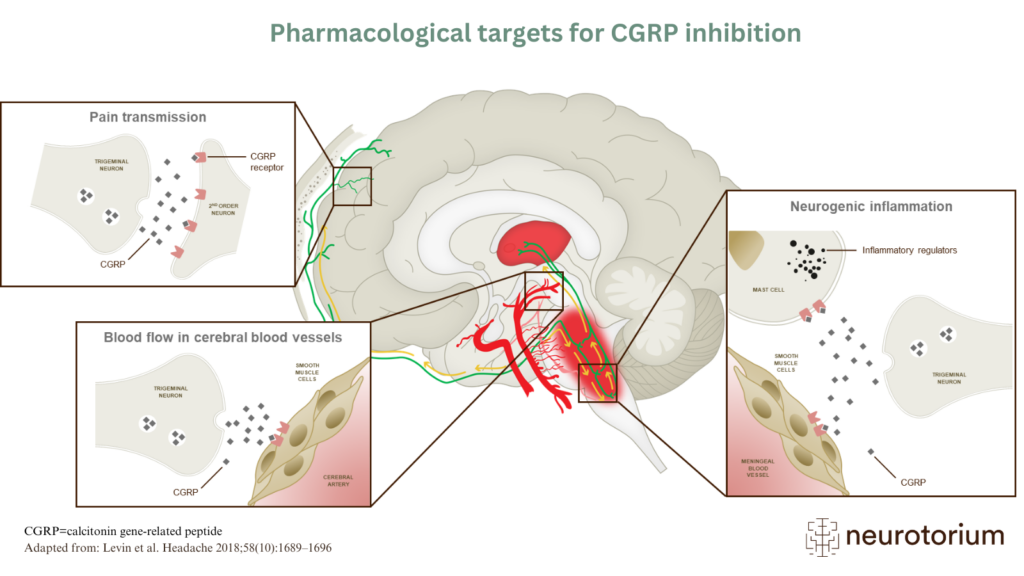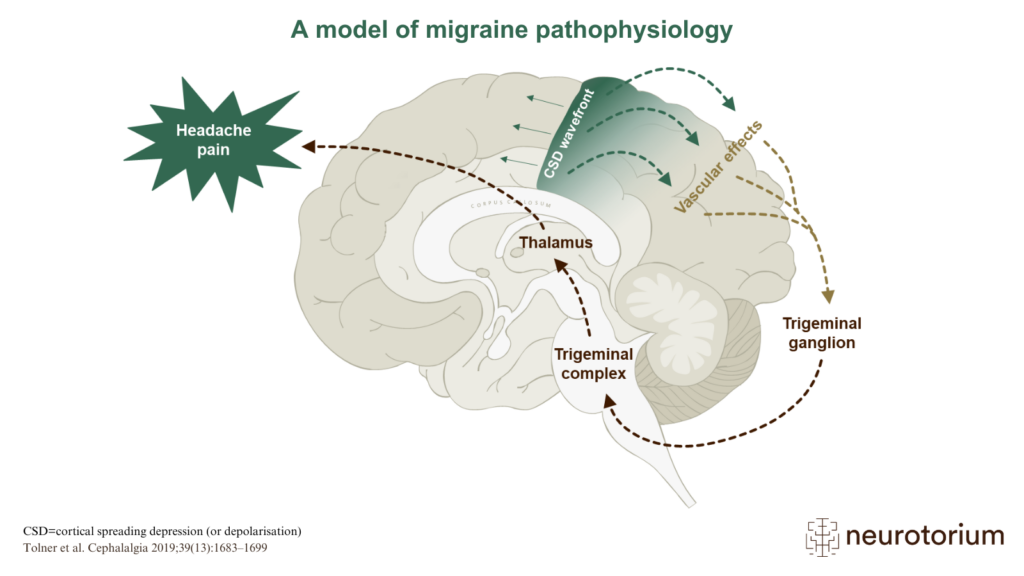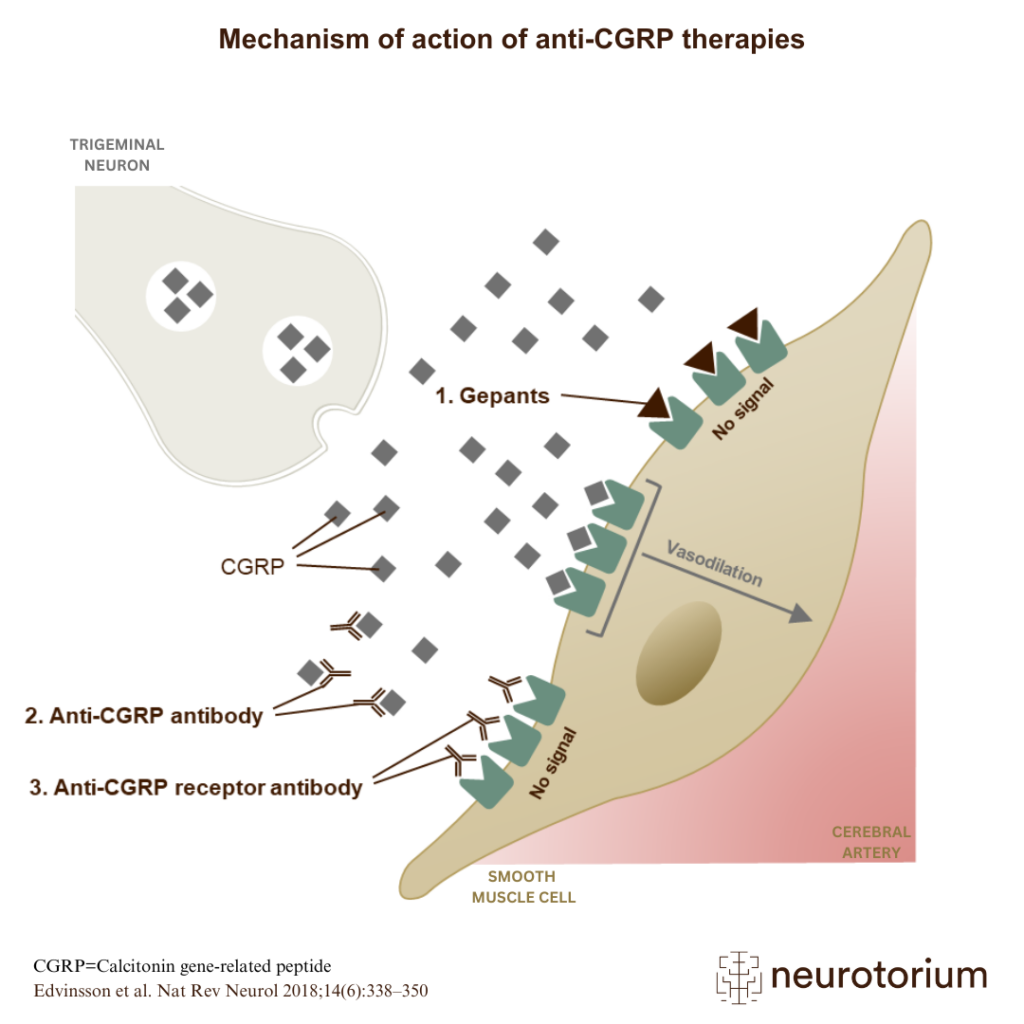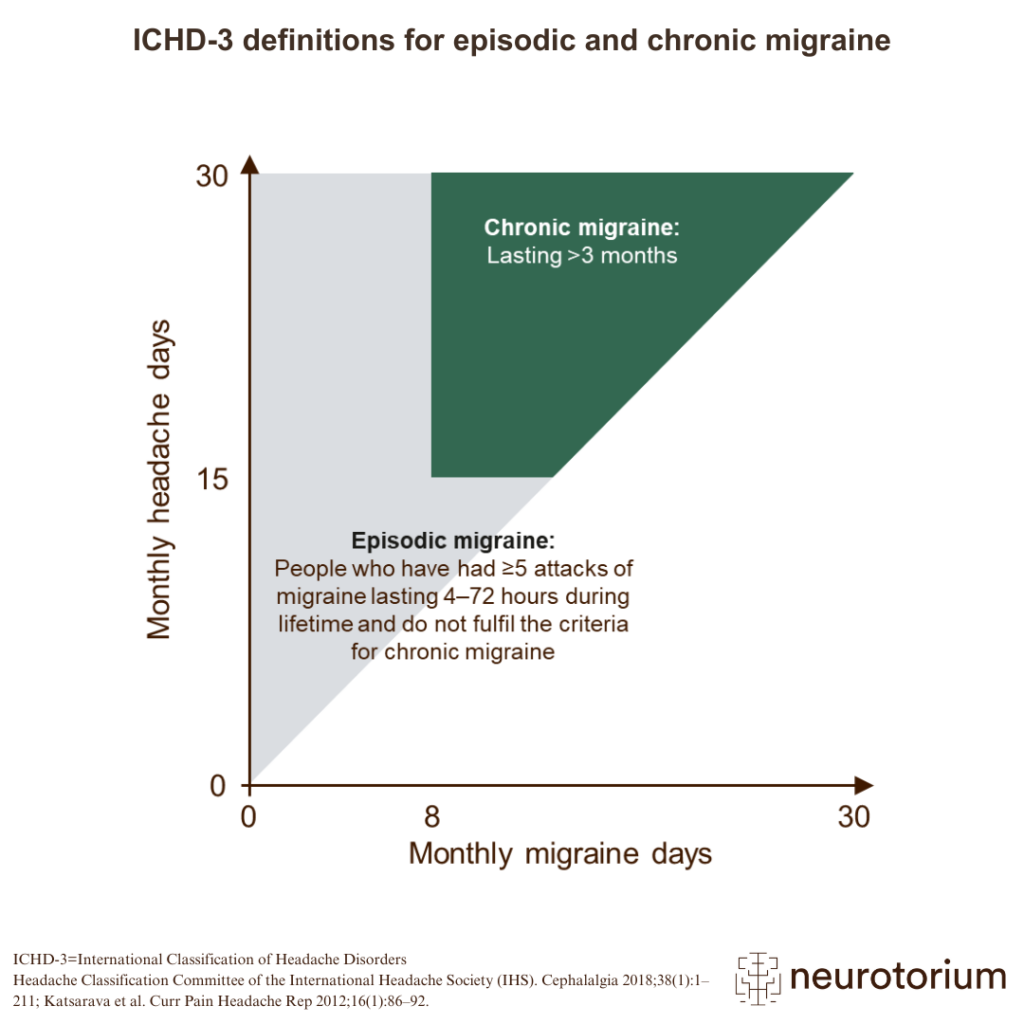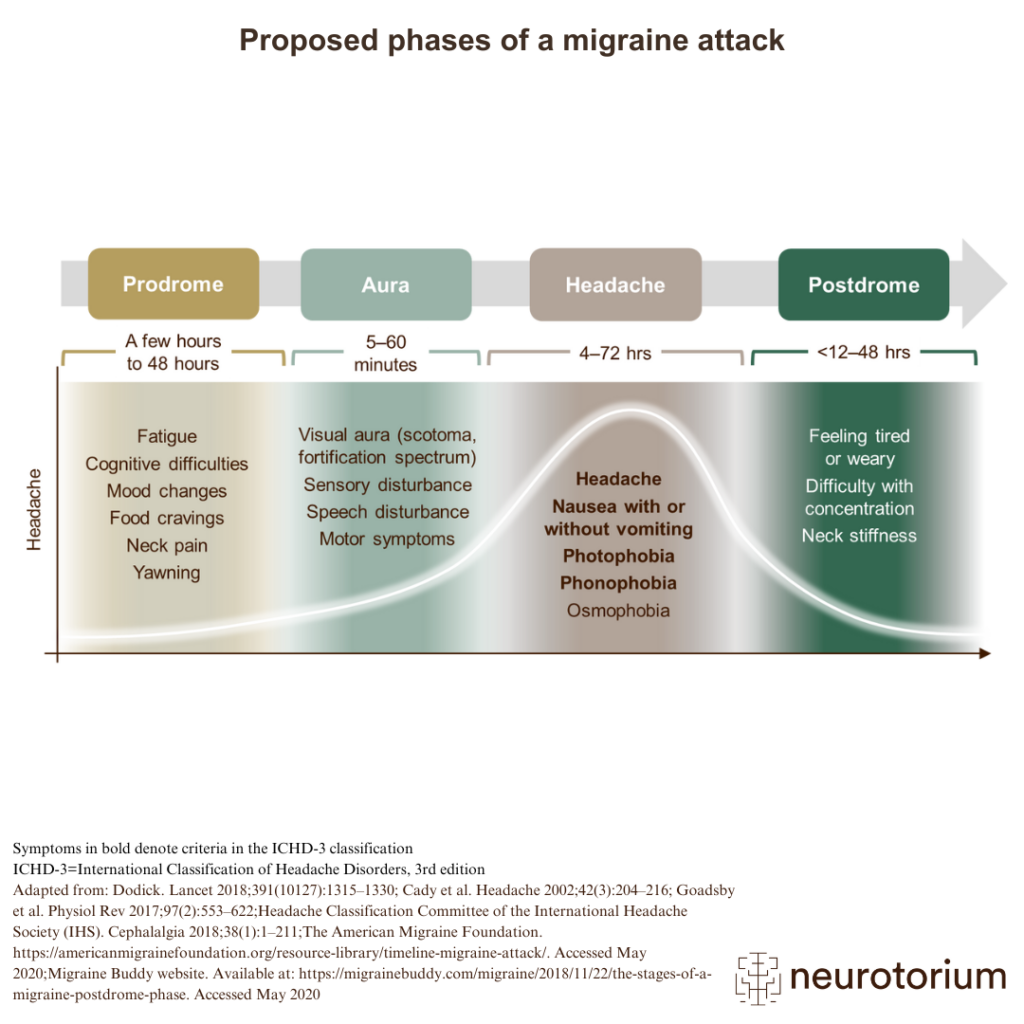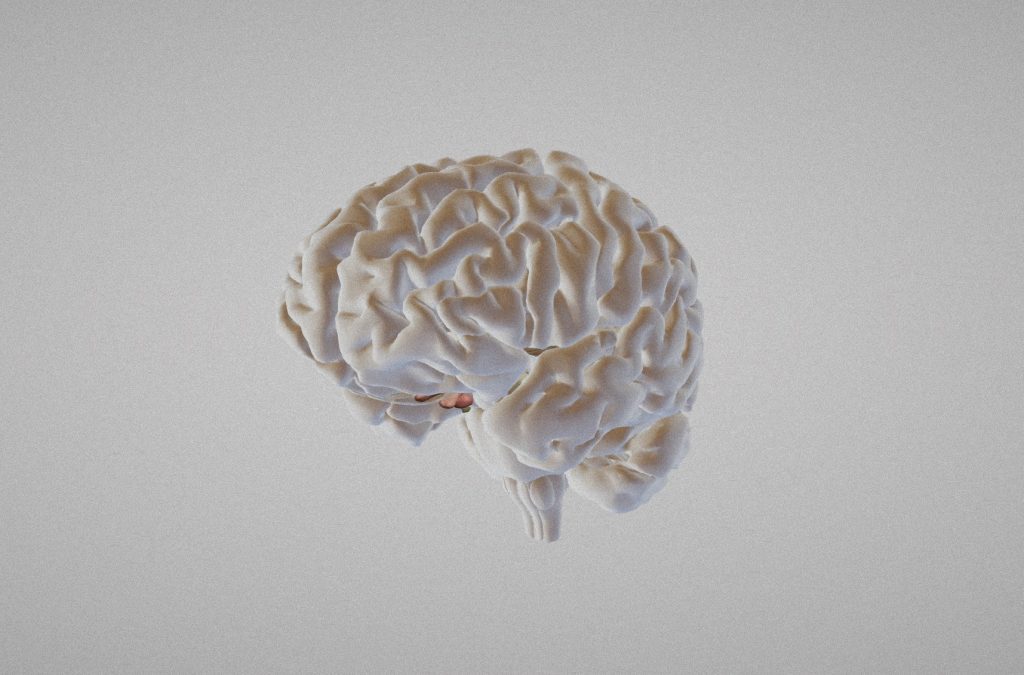Slide Decks on Migraine
Migraine is a chronic neurological disease characterised by episodic attacks of head pain. It is a burdensome condition and one of the commonest neurological diseases worldwide.
Get an introduction to what is currently known about migraine by going through our slide decks. You can scroll through the slides, read the presenter notes or download the slides and use them for your own presentations.
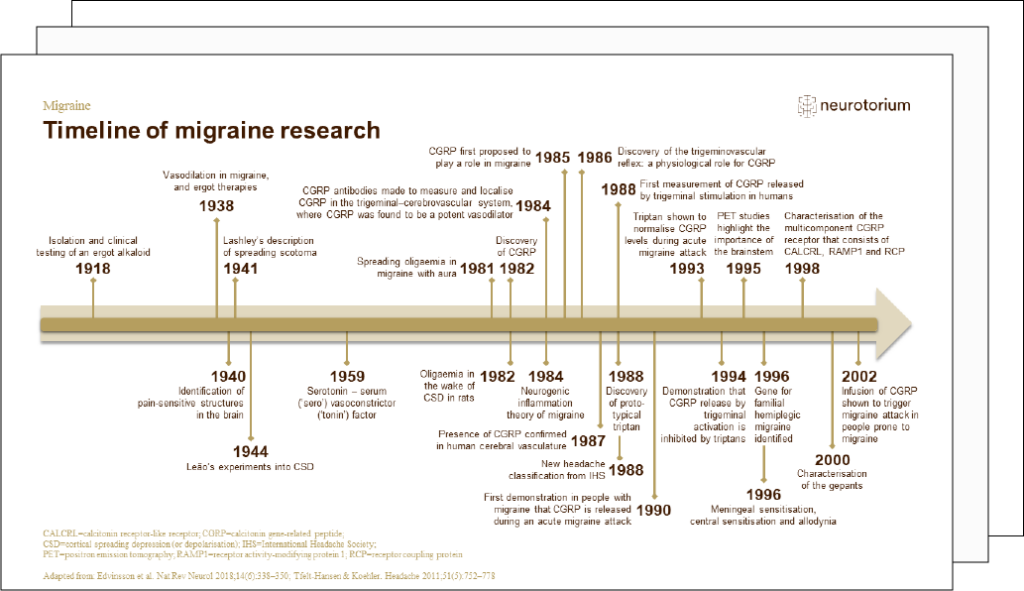
History, Definitions, and Diagnosis
The perception of migraine has changed substantially through the last century. This slide deck explores basic migraine concepts and definitions. Go to the slide deck.
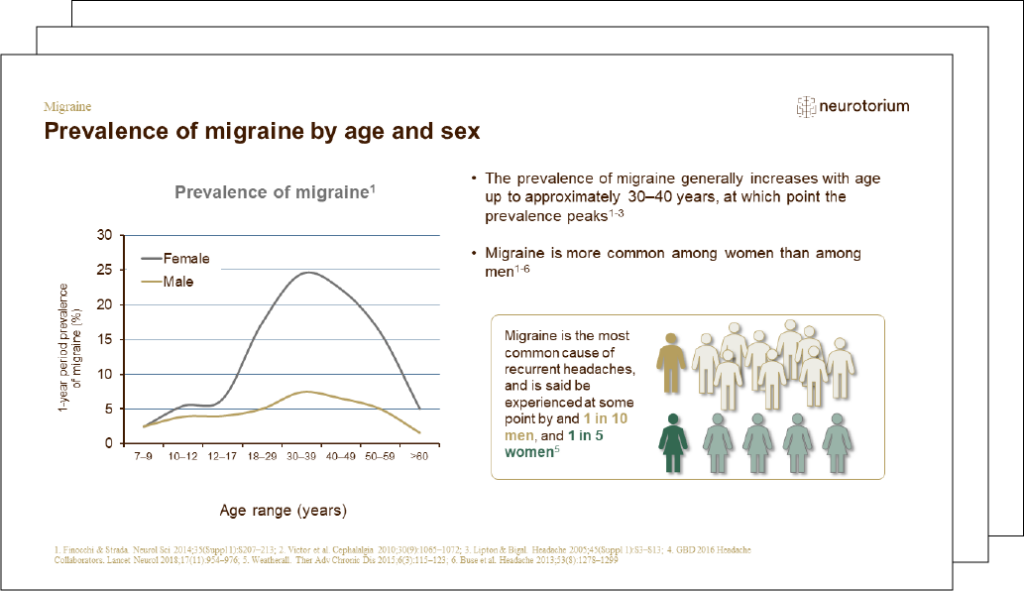
Epidemiology and Burden
This slide deck describes current knowledge on the economic and general burden of migraine. You will also find a brief introduction to the risk factors for the onset of migraine. Go to the slide deck.
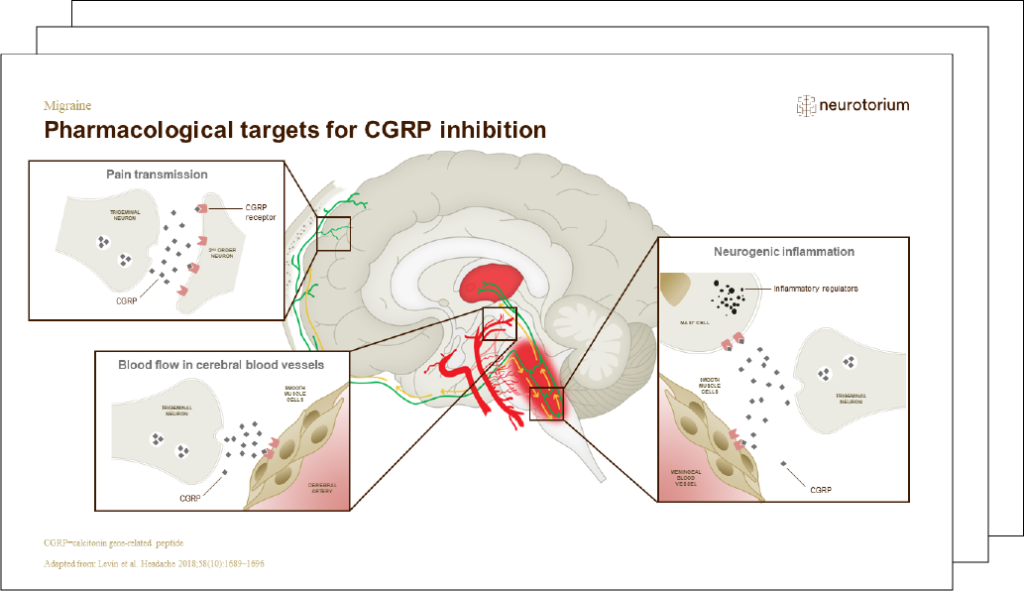
Neurobiology and Aetiology
This slide deck offers insight into the neurobiology and aetiology of migraine and discusses pain and nociception, the pathology of migraine and the brain regions involved in migraine. Go to the slide deck.
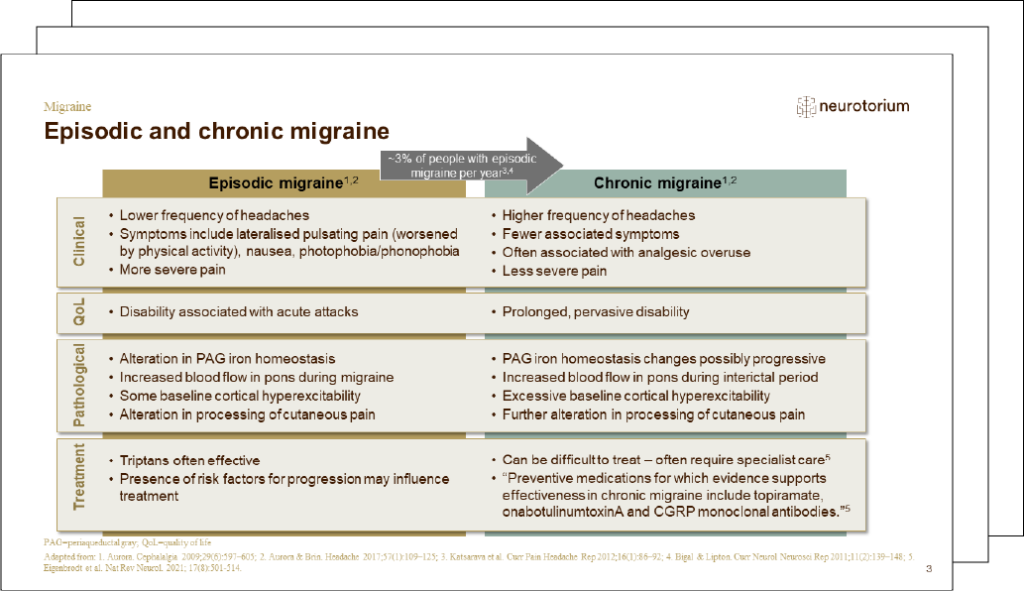
Course, Natural History, and Prognosis
In this slide deck you will find descriptions and illustrations of migraine attacks and triggers, including the four phases of a migraine attack. The slide deck also outlines the evolution of migraine from episodic to chronic and gives an introduction to migraine prognosis. Go to the slide deck.
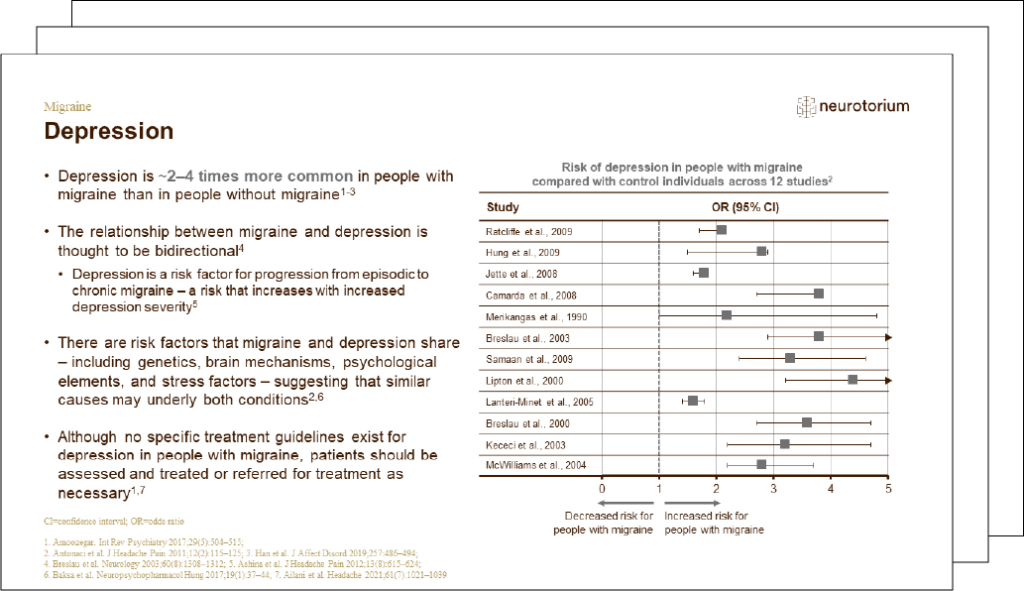
Comorbidities
Determining the relationship between migraine and a comorbid condition is complicated. This slide deck discusses in detail the presence of comorbidity in Migraine.
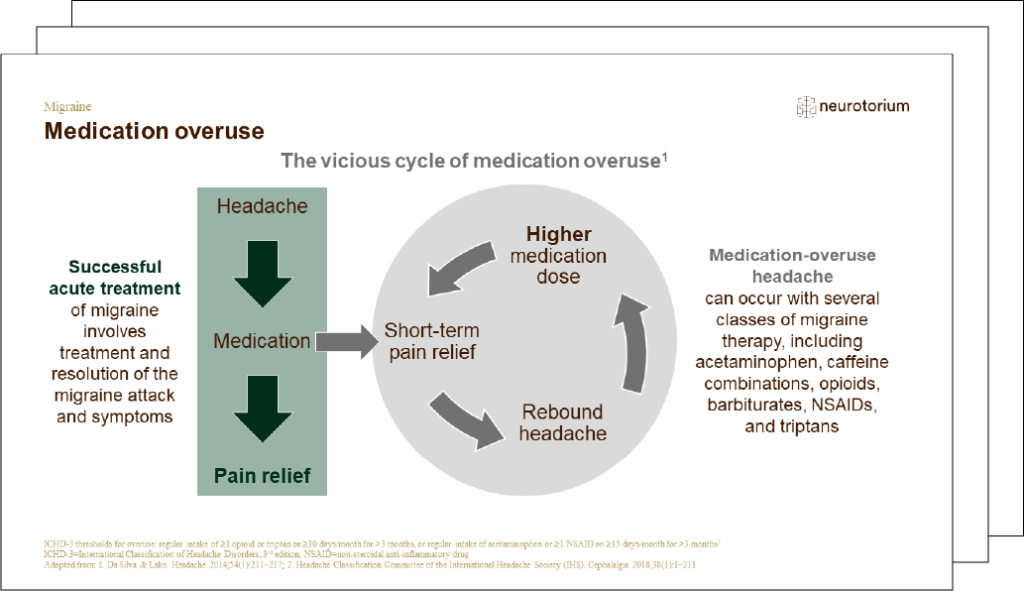
Treatment Principles
In this slide deck you will find basic concepts and definitions related to modern treatment approaches such as the use of analgesics and NSAIDs, as well as more targeted therapies, such as triptans and CGRP medications. Go to the slide deck.
Articles on Migraine
Migraine is a prevalent neurological disorder characterized by recurrent and disabling attacks of moderate to severe headache. Migraine attacks are triggerable, a feature systematically investigated in human models of migraine.
- Human Models of Migraine and Scientific Advances in Migraine TreatmentsMigraine is a prevalent neurological disorder characterized by recurrent and disabling attacks of moderate to severe headache
Download Illustrations & Figures on Migraine
Migraine is a complex spectrum disorder. The differences between people with episodic and chronic migraine highlight the need for treatments to be tailored to each group. Browse our library of downloadable psychiatry and neurology illustrations – everything you need for your presentations. This resource includes illustrations and figures on a range of key concepts or neuroscience facts.
Watch the Video on Migraine
Professors Lars Edvinsson, Peter Goadsby, Michael Moskowitz and Jes Olesen were awarded The Brian Prize in 2021 for their outstanding research on the causes and treatment of migraine.
Neurotorium and The Brain Prize partners on making educational resources on the winning topic available to all interested in learning more. You can read about the award-winning research on migraine at The Brain Prize website.
The Brain Prize Explainer – Migraine
In this documentary film, developed by the team behind The Brain Prize at the Lundbeck Foundation, you can learn more about migraine and the research that led to the brain prize in 2021, and you hear from a patient who suffers from the rarer condition of chronic migraine.
Understanding Medication Overuse Headaches
In this video, Professor Messoud Ashina discusses the importance of proper diagnosis in migraine treatment, distinguishing between primary and secondary headaches.
Human Models of Migraine
In this video, Rune Häckert Christensen, MD, PhD-fellow discusses how human models of migraine have identified key molecular triggers like CGRP and PACAP, leading to a revolution in treatment.
3D Brain Atlas
Some areas of the brain seem to be particularly related to migraine:
- The trigeminal nerve, the fifth cranial nerve, together with the brain stem, forms the trigeminal complex. Several lines of research point to the importance of this complex for migraine.
- Thalamus appears to be important for several processes underlying migraine, such as allodynia and central sensitisation.




